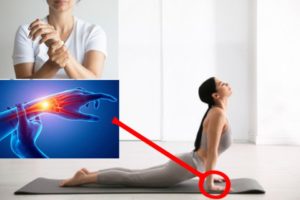
What are the most common causes of wrist pain?
Wrist pain can result from various factors, including injuries, repetitive strain, arthritis, and nerve compression. Consultation with an orthopedic specialist can help identify the specific cause and determine the appropriate treatment.
How is carpal tunnel syndrome diagnosed?
Carpal tunnel syndrome is typically diagnosed through a combination of medical history, physical examination, and nerve conduction studies. Early diagnosis is crucial for effective management. Hand specialists diagnose and treat carpal tunnel syndrome every day.
What exercises can help relieve hand and wrist pain?
Gentle stretching and strengthening exercises may help alleviate hand and wrist pain. However, it's essential to consult with a healthcare professional before starting any exercise regimen to ensure it is appropriate for your condition.
Are there home remedies for treating trigger finger?
Mild cases of trigger finger may be managed with home remedies such as rest, ice, and over-the-counter anti-inflammatory medications. However, persistent symptoms should be evaluated by a healthcare provider for proper diagnosis and treatment.
What are the symptoms of arthritis in the hand and wrist?
Arthritis symptoms in the hand and wrist may include pain, swelling, stiffness, and reduced range of motion. Early intervention, through medications, physical therapy, or other treatments, can help manage these symptoms effectively.
Can hand and wrist pain be a sign of a more serious condition?
Yes, hand and wrist pain can be indicative of various underlying conditions, including fractures, nerve compression, or inflammatory disorders. If you experience persistent or worsening pain, seeking prompt medical attention is advisable.

How long does it take to recover from wrist surgery?
The recovery time after wrist surgery varies depending on the type of surgery and individual factors. Your orthopedic surgeon will provide specific guidelines for post-operative care, rehabilitation, and anticipated recovery timelines.
What are the non-surgical options for treating De Quervain's tenosynovitis?
Non-surgical treatments for De Quervain's tenosynovitis may include splinting, anti-inflammatory medications, and physical therapy. Discussing these options with a healthcare professional can help determine the most suitable approach for your case.
Is hand and wrist pain common during pregnancy?
Yes, some women may experience hand and wrist pain during pregnancy, often attributed to hormonal changes and fluid retention. Simple measures like wrist splints and gentle exercises may help manage these symptoms.
Are there preventive measures for hand and wrist injuries in the workplace?
Yes, implementing ergonomic practices, taking breaks during repetitive tasks, and using proper hand protection can help prevent hand and wrist injuries at the workplace. Occupational health professionals can provide specific guidance based on job requirements.
How does a Certified Hand Therapist differ from a Physical Therapist?
A physical therapist is a generalist who works with patients to restore or improve overall physical function. PTs assess and treat a wide range of conditions affecting the musculoskeletal, neurological, and cardiovascular systems. They design comprehensive treatment plans to address issues such as pain management, mobility, strength, and coordination.
A certified hand therapist (CHT) is a specialized occupational or physical therapist who has undergone additional training and achieved certification specifically in the treatment of upper extremity conditions, with a focus on the hand and arm. CHTs have advanced expertise in evaluating and rehabilitating issues such as hand injuries, fractures, arthritis, and tendononitis. They employ specialized techniques and interventions to optimize hand function and facilitate a return to daily activities. Often, they take a proactive role in the treatment of hand conditions, successfully eliminating a patient's need for future surgery. They are therefore an essential member of a hand subspecialist's team.
CONCLUSION
Please note that these responses are for informational purposes only, and it's important to consult with a healthcare professional directly for personalized advice based on your individual situation. The OrthoSouth Hand Center is the largest group of fellowship trained hand and wrist surgeons in the Mid-South region. In addition to our orthopedic hand specialists, the Hand Center includes specially trained Certified Hand Therapists who focus specifically on rehabilitating conditions of the hand, wrist, and elbow.
If you would like to learn more about our hand and wrist services at OrthoSouth, please visit our Hand page, or call us at 901.641.3000.

